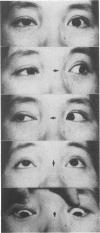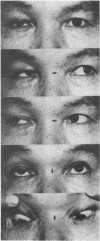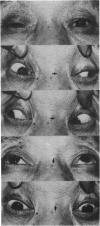Abstract
Three patients who developed unilateral ptosis followed by partial third nerve palsy were found to have a pituitary tumour. The visual field defects were minimal and asymptomatic. Two patients had a chromophobe adenoma and one patient had a prolactinoma. The importance of recognising a pituitary tumour as the cause of acquired unilateral ptosis is emphasised.
Full text
PDF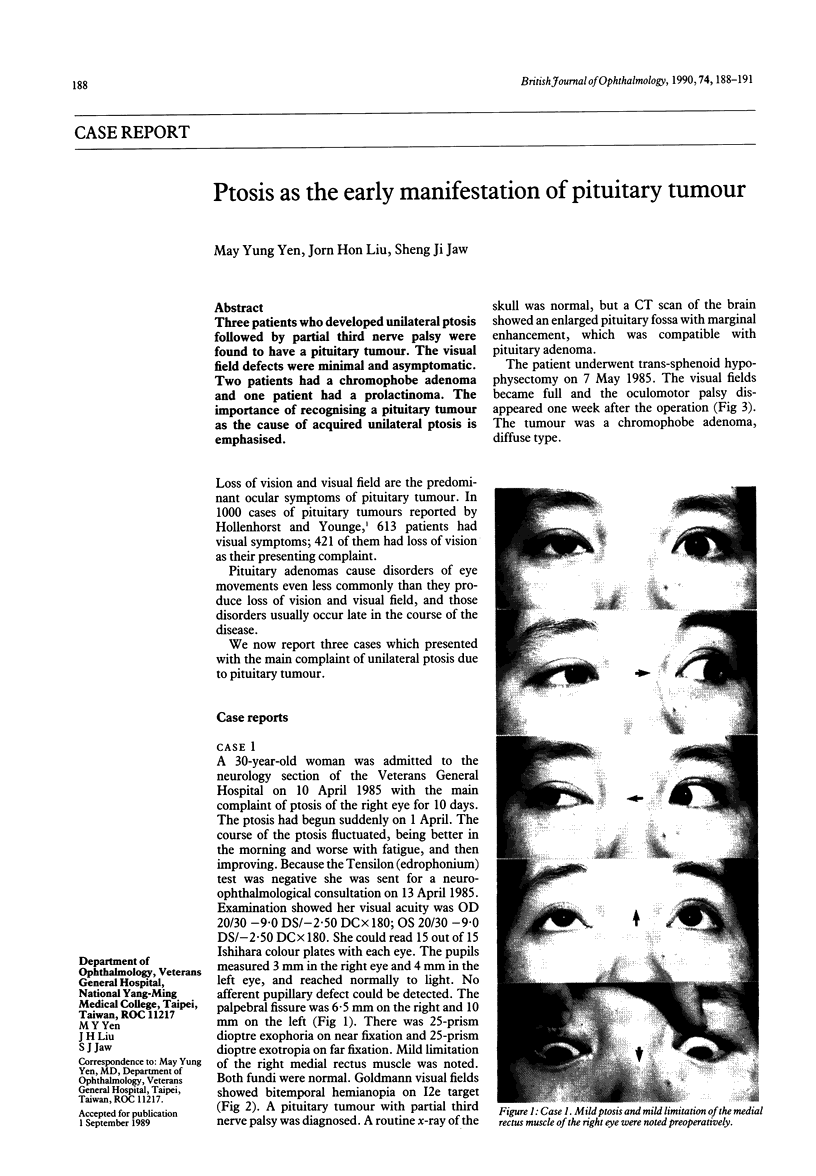
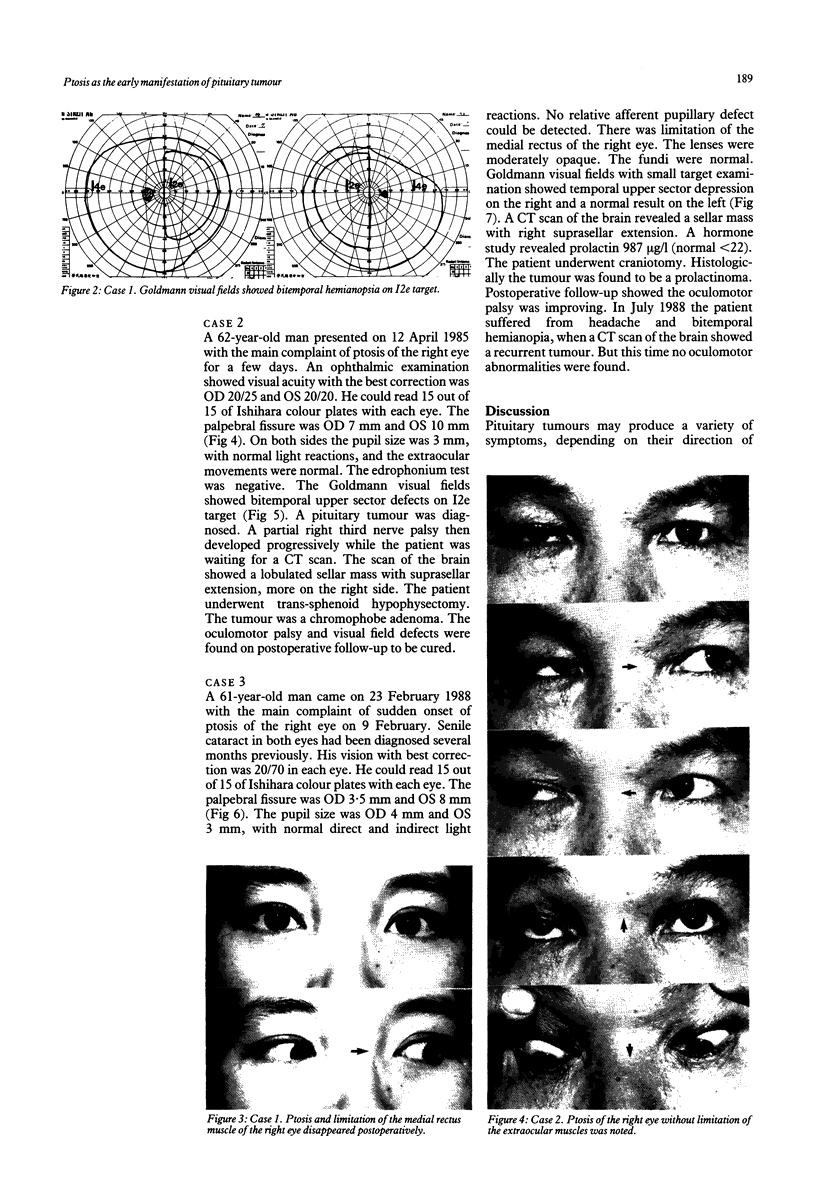
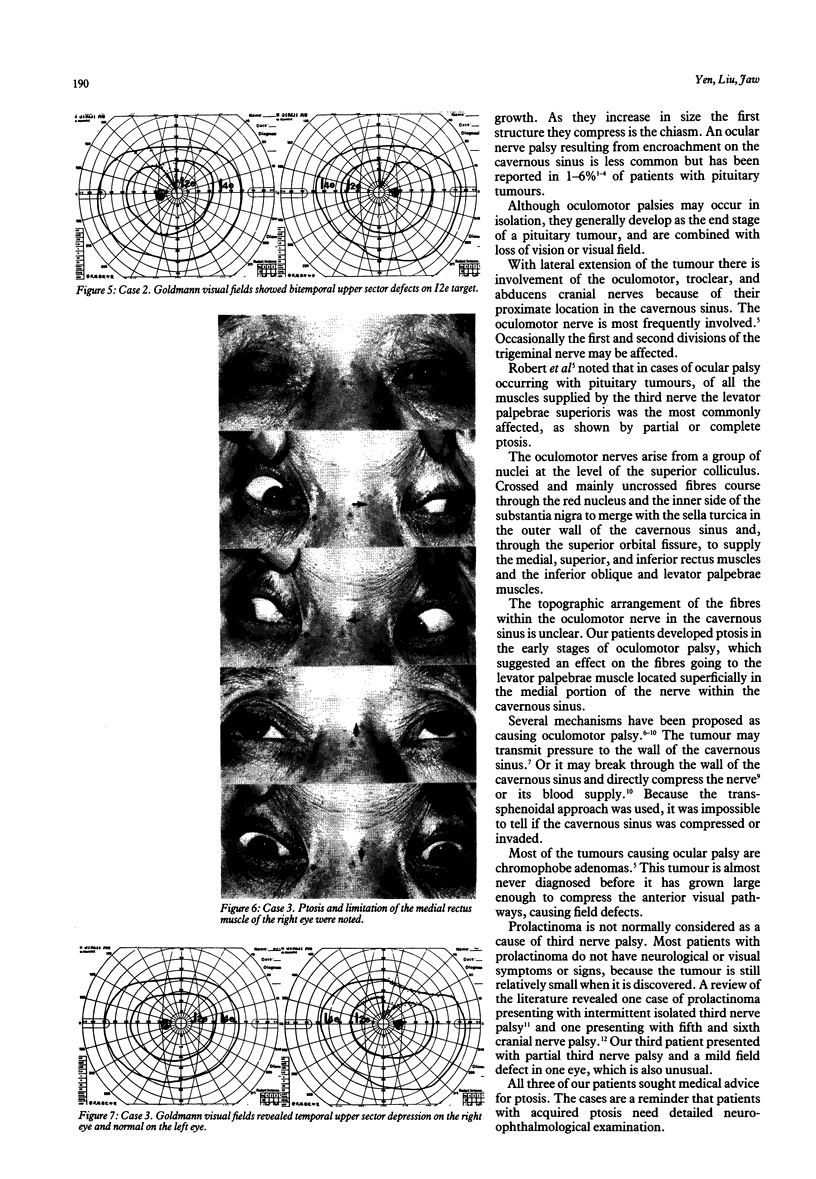

Images in this article
Selected References
These references are in PubMed. This may not be the complete list of references from this article.
- Anderson D., Faber P., Marcovitz S., Hardy J., Lorenzetti D. Pituitary tumors and the ophthalmologist. Ophthalmology. 1983 Nov;90(11):1265–1270. doi: 10.1016/s0161-6420(83)34393-1. [DOI] [PubMed] [Google Scholar]
- Elkington S. G. Pituitary adenoma. Preoperative symptomatology in a series of 260 patients. Br J Ophthalmol. 1968 Apr;52(4):322–328. doi: 10.1136/bjo.52.4.322. [DOI] [PMC free article] [PubMed] [Google Scholar]
- Jefferson G. Extrasellar Extensions of Pituitary Adenomas: (Section of Neurology). Proc R Soc Med. 1940 May;33(7):433–458. doi: 10.1177/003591574003300717. [DOI] [PMC free article] [PubMed] [Google Scholar]
- King L. W., Molitch M. E., Gittinger J. W., Jr, Wolpert S. M., Stern J. Cavernous sinus syndrome due to prolactinoma: resolution with bromocriptine. Surg Neurol. 1983 Mar;19(3):280–284. doi: 10.1016/s0090-3019(83)80017-2. [DOI] [PubMed] [Google Scholar]
- Robert C. M., Jr, Feigenbaum J. A., Stern E. W. Ocular palsy occurring with pituitary tumors. J Neurosurg. 1973 Jan;38(1):17–19. doi: 10.3171/jns.1973.38.1.0017. [DOI] [PubMed] [Google Scholar]
- Saul R. F., Hilliker J. K. Third nerve palsy: the presenting sign of a pituitary adenoma in five patients and the only neurological sign in four patients. J Clin Neuroophthalmol. 1985 Sep;5(3):185–193. [PubMed] [Google Scholar]
- Trautmann J. C., Laws E. R., Jr Visual status after transsphenoidal surgery at the Mayo Clinic, 1971-1982. Am J Ophthalmol. 1983 Aug;96(2):200–208. doi: 10.1016/s0002-9394(14)77788-8. [DOI] [PubMed] [Google Scholar]
- WALSH F. B. Bilateral total ophthalmoplegia with adenoma of the pituitary gland; report of two cases; an anatomic study. Arch Ophthal. 1949 Nov;42(5):646-54, illust. doi: 10.1001/archopht.1949.00900050656014. [DOI] [PubMed] [Google Scholar]
- Wykes W. N. Prolactinoma presenting with intermittent third nerve palsy. Br J Ophthalmol. 1986 Sep;70(9):706–707. doi: 10.1136/bjo.70.9.706. [DOI] [PMC free article] [PubMed] [Google Scholar]



